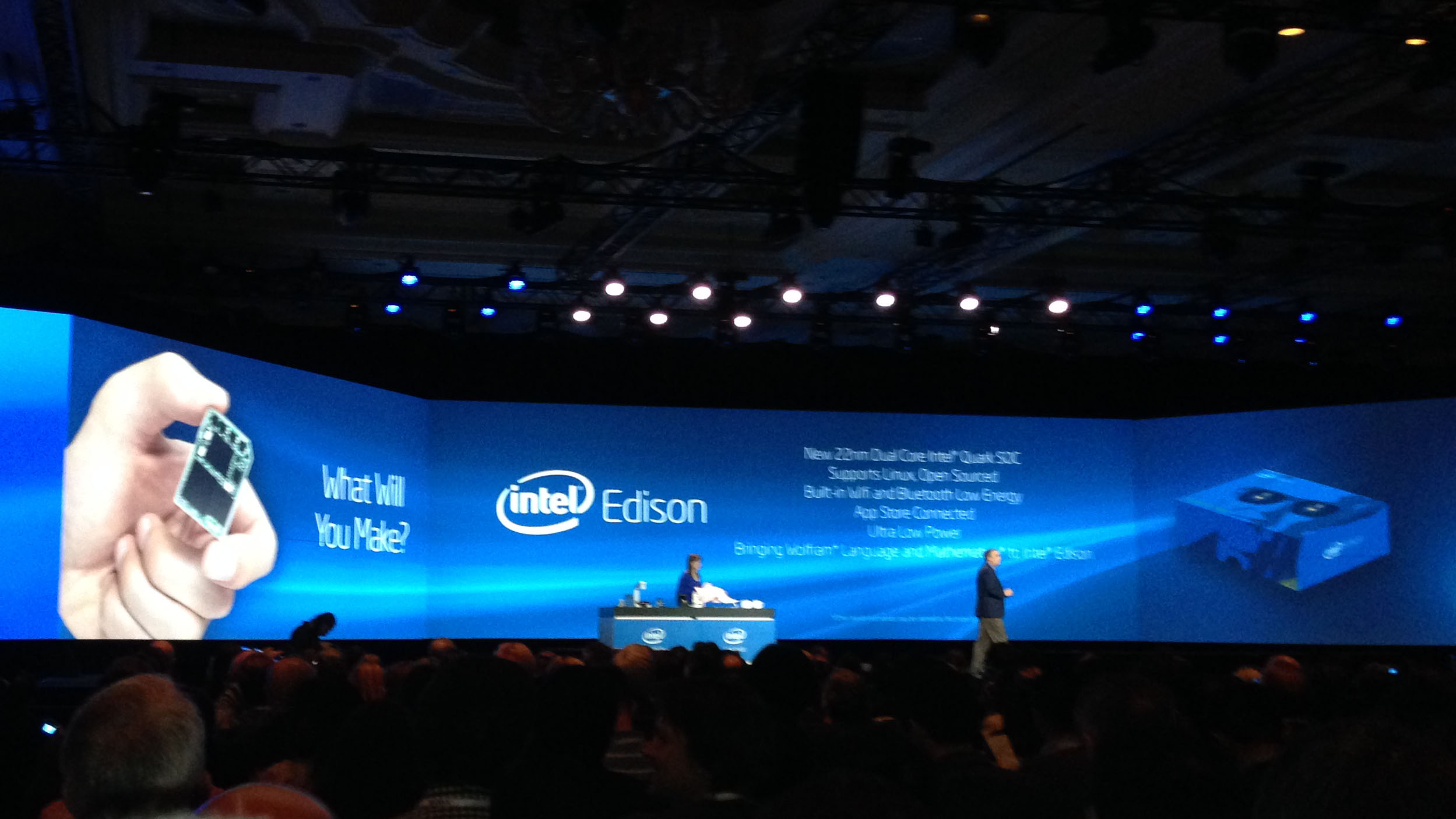Intel chooses Atom for Edison PC to capture Internet of Things explosion
Lightbulb moment for wearable tech and IoT

Intel's highly-anticipated Edison miniature PC is set to get a new design and features as the chip giant prepares to take on the wearable technology and Internet of Things (IoT) markets.
The computer, which was unveiled at CES in January, will use Intel's 22nm Silvermont dual-core Atom System-on-Chip (SoC), instead of the previously-planned Quark SoC. The dual threaded CPU will clock in at 500MHz, will feature an additional MCU, and will have 30 I/O interfaces via a small 70-pin connector.
The overall design has also been revamped. Instead of aiming for the SD card form factor, Intel will make the chip slightly larger, which it said will increase durability and lower costs.
It is possible the previously announced SD form factor was too cost prohibitive. The switch from Quark to Atom will give the computer a bit more bang for buck, but it does take away a little from the charm of the device.
Market opportunities
Intel is also adding additional I/O and software support, including Arduino IDE, Wolfram Language, Yocto Linux, Node.js, and Python. This is in addition to its existing Wi-Fi and Bluetooth LE support.
Intel said it is accelerating its plans with Edison to take advantage of market opportunities. The IoT market is set to be worth $7.3 trillion (£4.4 trillion, AU$8.2 trillion) by 2017, according to IDC. The wearable technology market is also expected to boom.
Edison is planned to launch this summer.
Are you a pro? Subscribe to our newsletter
Sign up to the TechRadar Pro newsletter to get all the top news, opinion, features and guidance your business needs to succeed!